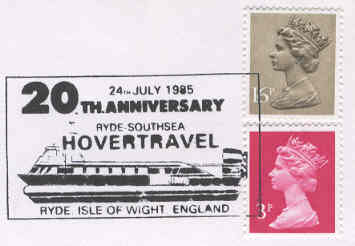|
Fast ferries |
|
|
|
1- the hovercrafts |
|
Fast ferries |
|
|
|
1- the hovercrafts |
| On July 19, 1959, near Dover, England, a full-scaled craft was seen literally floating over the water and up onto the land and back out over the water. This strange craft had just crossed the English Channel from France exactly 50 years after an airplane had flown the same route, for the first time. This craft employed an air jet to circulate the air. Its English inventor, Christopher Cockerell called it a "hovercraft". Built by an aircraft company Saunders Roe, the SR. N1 (for Saunders Roe Nautical One) crossed the Channel between Calais and Dover in 2 hours 3 minutes. But, another English inventor, C.H. Latimer-Needham added a "skirt" that was very flexible: when it came into contact with waves, rocks or other obstacles, it would simply collapse momentarily and then return to its normal inflated shape. |
|
| Within 10 years newer hovercraft, 50 times heavier and able to travel above 60 knots carried a third of all passengers and cars across the English Channel. During the following years, different hovercrafts are tested and in 1966, Hovertravel Ltd started their Southsea to Ryde service with Winchester class, 38 seater SR.N6.( Great Britain 1966) |

|
|
|
|
| In 1967, Seaspeed ordered for cross channel between Dover and Boulogne a 165 ton Mountbatten class
SR.N4 (Madagascar 1994 60 ariari), launched at East Cowes on 4th February
1968. The first regular passenger service from Dover started on 1 August 1968 when the Dover to Boulogne service was inaugurated by the SRN4 hovercraft now named "Princess Margaret". The craft was owned by Seaspeed, the hovercraft operating joint venture between British Rail Hovercraft Ltd and SNCF (French railways). |
|
| In 1969, four hovercrafts went into commercial service on the English Channel. These "MOUNTBATTEN" class hovercraft were built by BHC (The British Hovercraft Corporation) and operated on the Dover/Boulogne and Ramsgate/Calais routes. Cruising speeds in excess of 60 knots could be comfortably achieved and journey times of 35 minutes were achieved in comparison to about 2 hours by ferry. Weighing in at 177 tons and able to carry 254 passengers and 30 cars it was at the time the largest Hovercraft in the world. | |
|
|
|
| By the mid 1970s increased traffic leads to increased capacity on the hovercraft. This problem was solved by stretching the SRN4 hovercraft and turning them into SRN4 Mk3 craft, which extend their capacity to 424 passengers and 54 cars.In 1982, the company Hoverspeed had a 21% market share of cross-channel traffic, but the hovercraft was becoming too much expensive to run and their giant propellers were no longer made. | |
|
|
The fastest ever crossing was recorded by the SRN4 "Princess
Anne" (Benin) in September 1995 taking only 22 minutes to cross the Channel. This SRN4 MK1 built in 1968, was converted in MKIII in 1978 ; she has a length of 56,38 m and admitted 360 passengers and 50 cars. She now lies at the Hovercraft Museum in Lee on Solent. |
|
|
|
| Hovermarine has built hovercraft H527 TEJO for Hong-Kong/Macao link. Long of 27.02 m, with a full load of 97.70 tonnes, it can fly at a maximum speed of 30 knots powered by a MTU 12V396TB83 with a fuel consumption of 650L/hour. It is licensed to carry 208 passengers. |
|
| Fuel consumption and an old technology with development of waterjets lead to the end of the hovercrafts. In 2000 Hoverspeed, created on 25 October, 1981, when Seaspeed and Hoverlloyd merged, decided to end hovercraft operation. The hovercraft were replaced by seacats, which could carry nearly twice as many cars and passengers although with a slower crossing time to Calais of 45 minutes. The last hovercraft crossing was on Sunday 1 October 2000 and the seacats took over the service the following day. | |
| Next parts: hydrofoils and jetfoils and the catamarans | |
|
Click below for the pages list |
|
|
Page on line on 24/04/05
|